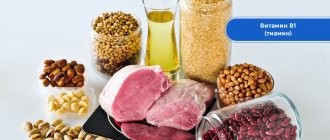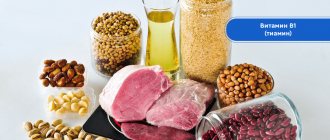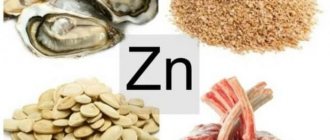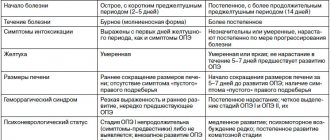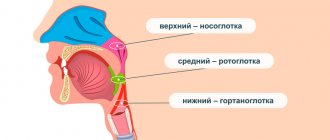Published: 01/26/2018 Updated: 03/09/2021
Vitamin deficiency can occur for a variety of reasons. The main ones include:
- monotonous diet;
- improper preparation of food;
- diseases of the gastrointestinal tract;
- pregnancy and lactation;
- stressful conditions and nervous overload;
Vitamin B1
Cellular energy booster that promotes growth and development. Vitamin B1 increases mental and physical performance, improves detoxification function and metabolism in the nervous system. It also improves mood, has a mild analgesic and wound-healing effect.
Vitamin B1 deficiency causes various disorders in the nervous, cardiovascular and digestive systems. To compensate for its deficiency, include buckwheat, corn, cashews, and lentils in your diet.
Main symptoms of vitamin B1 deficiency
- loss of appetite;
- violation of movement coordination;
- depression, nervousness;
- weakening of cognitive functions (memory loss);
- muscle weakness.
An extreme form of vitamin deficiency is Beriberi disease, which damages the peripheral nerves or the cardiovascular system. As a result, muscles, especially the legs, become exhausted, severe pain appears in the calves, weakness develops, and gait worsens.
Causes of Vitamin B1 Deficiency
- constant consumption of refined products (high-grade flour and products made from it, polished rice);
- increased need for vitamin (pregnancy, breastfeeding, stress, physical activity, infections);
- chronic diseases (diabetes mellitus, thyrotoxicosis, antibiotic poisoning, alcoholism);
- smoking;
- Excessive consumption of tea and coffee, as caffeine destroys vitamin B1.
If you notice that your mood has worsened, cramps have appeared in the calf muscles, and your appetite has disappeared against the background of constant stress, perform the study 95-10-201 - Vitamin B1 (thiamine) in CITILAB. The analysis helps to identify vitamin B1 deficiency, prescribe medications in a timely manner and adjust the diet.
Forecast and preventive measures
Timely treatment of hypovitaminosis allows one to count on a complete recovery of the patient. A favorable prognosis is formed with moderate vitamin deficiency and normalization of the diet of a child or adult. Severe forms of vitamin deficiencies do not always allow the normal functioning of individual body systems to be restored. If left untreated, vitamin deficiency can be fatal.
Prevention of pathology is based on a balanced diet. Signs of vitamin deficiency will not appear in children and adults if they systematically consume a sufficient amount of vegetables, fruits, and herbs. In autumn and winter, you should include freshly squeezed juices, citrus fruits and sauerkraut in your diet.
Vitamin B5
Pantothenic acid (vitamin B5) has a stress-protective effect and is part of coenzyme A, which takes part in the metabolic processes of proteins, fats, and carbohydrates.
Vitamin B5 is necessary for the synthesis of vital substances such as hemoglobin, cholesterol, histamine, acetylcholine. In addition, it activates the synthesis of glucocorticosteroids (adrenal hormones), which have immunoregulatory, antiallergic, and anti-inflammatory effects. It is important to understand that without pantothenic acid, other vitamins are poorly or not absorbed at all. Mackerel, sardines, tuna, sweet bell peppers, and pine nuts will help you add a portion of the vitamin to your diet.
Main symptoms of vitamin B5 deficiency
- fatigue, weakness, apathy;
- the appearance of a burning sensation in the toes, often numbness;
- with a severe deficiency, “burning feet” syndrome occurs - excruciating pain in the legs at night.
With a lack of pantothenic acid, the production of gastric juice decreases, heart function worsens, neuritis develops, and the risk of developing skin diseases and duodenal ulcers increases.
Causes of Vitamin B5 Deficiency
- long-term malnutrition (food poor in proteins, fats, vitamin C and B vitamins);
- suppression of intestinal microflora, including long-term use of antibiotics and sulfa drugs;
- intestinal diseases of various nature.
To promptly identify pantothenic acid deficiency, go to CITILAB study 95-10-202 - Vitamin B5 (pantothenic acid).
Treatment of B vitamin deficiency
There are two types of correction of B vitamin deficiency: therapeutic and preventive.
Therapeutic tactics involve the use of high doses of B vitamins over long courses. The correction is carried out under the strict supervision of a doctor in the presence of clinical and laboratory data confirming vitamin deficiency. Currently, primary nutritional deficiencies are rare. Basically, this form of deficiency of B vitamins develops against the background of pathology of the gastrointestinal tract or with hereditary disorders of vitamin metabolism. In this case, taking oral forms of drugs does not always have the expected therapeutic effect, so some groups of patients are prescribed injections of multi- or single-vitamin preparations.
Preventive tactics for eliminating deficiency of B vitamins involve taking medications in a dosage close to the daily requirement. Such therapy can be prescribed without proven vitamin deficiency.
Medical genetics diagnoses hereditary and acquired disorders of vitamin metabolism, which allows you to select tactics for correcting hypo- and avitaminosis.
Vitamin B6
Essentially, vitamin B6 (pyridoxine) is a metabolism “activator.” It is necessary for regulating the absorption of proteins, the exchange of amino acids involved in the synthesis of basic neurotransmitters and hemoglobin. With the participation of pyridoxine, glucose is delivered to cells, including brain cells. Vitamin B6 affects cognitive functions: improves memory, thinking, and also improves mood and helps resist stress.
Contained in many plant foods - bananas, nuts (pistachios, hazelnuts), avocados, beans, soybeans, beef liver. It is important to remember that with prolonged or improper heat treatment of foods, this vitamin is destroyed.
Main symptoms of vitamin B6 deficiency
- fatigue, depression;
- hair loss;
- “jams” in the corners of the lips.
A clear lack of vitamin B6 reduces the synthesis of dopamine, serotonin, gamma-aminobutyric acid, and melatonin. This can lead to psychological and physiological disorders, insomnia, decreased intellectual abilities, irritability, apathy, or, conversely, aggressive behavior.
Causes of Vitamin B6 Deficiency
- weakened condition, including after surgery, serious illness;
- atherosclerosis;
- cardiovascular diseases;
- pregnancy;
- long-term excess consumption of protein foods;
- increased physical activity;
- liver diseases, gastritis;
- anemia.
If you notice that your hairstyle has become less voluminous, severe dry skin has appeared in the area of the nasolabial fold, above the eyebrows, in general the skin has become drier and rougher, cuts and scratches are slowly healing - do not put off visiting a doctor. The first thing you need to do is donate blood to CITILAB for research 95-10-203 Vitamin B6 (pyridoxine), which will help determine whether there is a deficiency of vitamin B6 in the body or whether there is enough of it.
Sources, role and symptoms of hypovitaminosis
B vitamins include: B1, B2, B3, B5, B6, B7, B9, B12. Previously, these included compounds B4 (choline), B8 (inositol). Levocarnitine has also been mistakenly called vitamin B11.
Vitamin B1 - thiamine
Takes part in the metabolism of carbohydrates and a number of amino acids, is important for the nervous, cardiovascular systems, and liver cells. Vitamin B1 is not synthesized in the body; it requires regular intake from food to meet its needs. They are rich in wheat sprouts, rye bread, various seeds and nuts, brown rice, legumes, and sea buckthorn berries. Animal sources include pork, chicken, salmon, and eggs.
Symptoms of vitamin B1 deficiency develop during fasting, unbalanced diet and manifest themselves in the form of severe neurological disorders (beriberi disease):
- pain in the calf muscles;
- decreased deep and cutaneous sensitivity of the legs and feet;
- paresthesia in the legs (tingling, goosebumps);
- sleep disturbances, emotional instability;
- decreased memory and mental performance.
In patients with anorexia and alcoholism, symptoms of B1 deficiency (acute Gaye-Wernicke encephalopathy, Korsakoff syndrome) can develop acutely. The clinic shows severe motor disturbances, visual disturbances, confusion, and psychotic symptoms. Without emergency help, a person can die within a few days.
Vitamin B2 - riboflavin
This is a source for creating enzymes that participate in the synthesis of vitamin B6 derivatives, reactions with acids, break down foreign and dangerous compounds, and are responsible for the state of hemoglobin in the body.
So it is necessary for:
- maintaining healthy skin, hair nails;
- formation of red blood cells and antibody proteins;
- regulation of reproductive function.
The main sources of B2 are food of animal origin - kidneys, liver, eggs. It is found in smaller quantities in porcini mushrooms and champignons, broccoli, almonds and cottage cheese.
Anorexia, vegetarianism, inflammatory diseases of the gastrointestinal tract, alcoholism, taking sulfur preparations or tranquilizers can provoke hypovitaminosis B2.
Its clinical manifestations are as follows:
- angular stomatitis (“jams”, ulcers in the corners of the mouth);
- dryness and cracks in the mucous membranes of the lips;
- glossitis (swelling, redness of the tongue);
- conjunctivitis or keratitis (red eyes, photophobia, decreased vision);
- dermatitis on the skin of the face (eyelids, nasolabial folds, ears, nose);
- weakness, fatigue, drowsiness;
- muscle pain and muscle weakness;
- anemia.
B3 - niacin
Other well-known names for the vitamin include nicotinic acid and vitamin PP. The substance takes part in cell division, protein synthesis, hormones, cellular respiration and many other processes. With the participation of this vitamin, steroid hormones and fatty acids are formed. In addition, B3 has a vasodilating effect, heals wounds, and reduces the concentration of cholesterol in the blood (primarily “dangerous” fractions).
The source of the vitamin is the essential amino acid tryptophan. Rich foods include: liver, tuna, turkey, brewer's yeast. You can also get B3 by adding whole grains to your diet: oats, rye, barley, wheat germ, peanuts.
Heat treatment reduces the vitamin content in food, and love for refined carbohydrates increases the need for it.
The unusual name “vitamin PP” is an abbreviation of two English words “preventive pellagra”, which means “preventing pellagra”. Signs of deficiency are described as a disease of the “three Ds”: diarrhea, dermatitis, dementia. They occur with prolonged hypovitaminosis. Clinical manifestations are more extensive and include:
- dermatitis, increased skin sensitivity to sunlight, baldness;
- walking impairment, neuritis, paralysis of limbs;
- weakness and fatigue, headaches;
- from the psyche: asthenia, sleep disturbances, aggression, dementia;
- heart damage - dilated cardiomyopathy.
Vitamin B5 - pantothenic acid
The biologically active substance is involved in the metabolism of proteins, fats and carbohydrates. It stimulates the adrenal cortex to increase the secretion of corticosteroids. The vitamin is involved in the synthesis of antibodies, normalizes lipid metabolism, and restores the integrity of the skin and mucous membranes.
A smaller part of B5 enters the body with food: egg yolk, yeast, milk, carrots, caviar, green salads. The main amount of the vitamin is synthesized by intestinal flora. This fact explains the occurrence of its deficiency against the background of long-term use of antibacterial or synthetic sulfonamide drugs and malabsorption syndrome. in which the absorption of substances is impaired.
Hypovitaminosis manifests itself in the form of metabolic disorders, damage to the digestive tract, skin and nail diseases, and weakened immunity.
Patients usually complain of:
- fatigue, headaches;
- deterioration of skin condition;
- low mood;
- muscle pain;
- numbness and pain in the feet;
- nausea, digestive disorders;
- frequent viral infections.
Vitamin B6 – pyridoxine
Participates in the formation of red blood cells and the hemoglobin they contain. Being a coenzyme of proteins that process amino acids (primarily in the nervous system) it helps cells properly utilize and consume glucose, preventing sudden surges in blood sugar. The effect on the body is to maintain physical and mental performance, ensuring trophic innervation of the nervous system.
Therefore, deficiency primarily manifests itself in the form of symptoms such as:
- depression, lethargy;
- decreased resistance to any load;
- numbness, paresthesia in the arms and legs;
- joint pain, arthritis;
- muscle weakness;
- “jams” in the corners of the mouth, hair loss.
Hypovitaminosis occurs against the background of an unbalanced diet (diet, alcoholism), taking the B6 antagonist drug ftivazid. An increase in the need for B6 is possible during antibiotic treatment, smoking, and hormonal contraceptive therapy.
Pyridoxine is found in green plants, nuts, tomatoes, strawberries, lemons, oranges, and legumes. Animal sources include eggs, liver, fish.
Hypervitaminosis occurs due to the consumption of large doses of B6 and is characterized by a decrease in protein concentration in tissues: weakness, confusion, convulsions. Scientists have proven that an overdose of this vitamin increases the risk of developing lung cancer in men.
Vitamin B7 - Biotin
Regulates all types of metabolism, participates in the synthesis of the structural protein collagen, and the transfer of carbon dioxide molecules. Contained in egg yolks, beef liver, bananas, brown rice, citrus fruits, apples, parsley. Most of the vitamin is synthesized by intestinal flora.
Biotin deficiency develops against the background of strict diets, taking antibiotics, using preservatives E221-E228, and alcoholism.
Signs of deficiency will be:
- anemia;
- dryness, flaking of the skin;
- dermatitis in the corners of the mouth;
- anorexia, nausea;
- weakness, apathy, increased drowsiness;
- high levels of fat and glucose in the blood.
Hereditary diseases associated with impaired vitamin metabolism are also possible. They manifest in the neonatal period or in older children. Among the alarming symptoms are seizures, delayed physical and mental development.
Vitamin B9 - folic acid
Responsible for cell growth and maintaining DNA integrity. The vitamin has an effect on the development of the nervous system and is involved in hematopoiesis. Folic acid enters the body with food and is synthesized by bacteria in the intestines. Sources of B9 - spinach, asparagus, broccoli, pork and chicken liver, legumes.
Vitamin deficiency is most dangerous during pregnancy, as there is a risk of miscarriage and deformities in the fetus. The risk group includes:
- women with folate metabolism disorders, when B9 is less absorbed by the body;
- pregnant women receiving treatment with valproic acid (anticonvulsant) drugs.
But hypovitaminosis is dangerous not only for special categories of people. An increased need for B9 occurs during therapy with anti-malaria drugs and cytostatics (Fansidar, Methotrexate).
You can suspect a vitamin deficiency if you have the following symptoms:
- infertility in men and women;
- early miscarriages;
- fetal development abnormalities;
- decreased mental performance;
- megaloblastic anemia (by blood test).
Substance B10 or para-aminobenzoic acid is a fragment of vitamin B9; its properties have not been fully studied, and there are no clinical studies on the need for prophylactic use.
Vitamin B12 - cyanocobalamin
It is absorbed and works only when taken with animal food or as part of medications in the small intestine. Cyanocobalamin is also produced by bacteria in the large intestine, but the body cannot absorb it.
The substance participates in the oxidation reactions of proteins and fats. Food sources of cyanocobalamin are pork, beef liver, herring, mackerel, eggs, cheese, cottage cheese.
A complete rejection of animal products that contain the vitamin leads vegans to the development of megaloblastic anemia. The following also suffer from vitamin deficiency:
- patients with diseases of the ileum, helminthiases (absorption is impaired);
- persons with Castle factor deficiency (produced in the stomach and activates B12).
Hypovitaminosis is associated not only with pathologies of hematopoiesis, but also with the destruction of the myelin sheaths of nerve fibers, and depressive syndrome in the elderly.
Vitamin B12
Vitamins B12 are a whole group of cobalt-containing biologically active substances. One of the main ones in it is cyanocobalamin. It is involved in the production of red blood cells and the process of hematopoiesis. Contained mainly in products of animal origin - meat, milk, eggs. Therefore, deficiency is most often observed in people following a strict vegetarian diet, in pregnant women who require an increased amount of B12, as well as in atrophic gastritis and chronic inflammatory diseases of the small intestine.
Main symptoms of vitamin B12 deficiency
- numbness of the limbs;
- muscle weakness;
- visual disturbances (double vision, blurred outlines of objects);
- pale skin;
- memory loss.
With a lack of vitamin B12, there is a risk of developing thrombosis and the functioning of the autonomic nervous system is disrupted.
The cause of vitamin B12 deficiency is insufficient absorption in the intestines. This may be due to a violation of the internal factor in the stomach, the development of pathogenic microflora, which can interfere with absorption in the stomach.
With age, after 40 years, the absorption of vitamin B12 becomes worse, so it is important to promptly identify its deficiency in order to prevent serious illnesses. To do this, go to CITILAB study 33-20-045 - vitamin B.
Be healthy!
Diagnosis of hypovitaminosis
Symptoms of vitamin deficiency require immediate contact with a gastroenterologist. The doctor performs a physical examination of the patient and collects information for the medical history. The manifestations of the pathology are specific, so making a diagnosis in most cases does not cause difficulties.
Analysis of patient biomaterials in laboratory conditions allows us to assess the degree of vitamin deficiency and identify pathologies that could cause it.
Additional consultations with doctors are prescribed to the patient if he has chronic pathologies or is undergoing treatment with drugs that cause vitamin deficiency. The gastroenterologist takes into account the prescriptions of his colleagues when developing a therapeutic course for a child or adult.
Deficiency Symptoms
At first there are no specific symptoms. Weakness, fatigue, shortness of breath and palpitations during physical activity - all this happens with a host of other diseases. How can we determine what caused these symptoms: a lack of vitamin or something else? First, think about whether there are real reasons for such problems. Secondly, analyze your diet - does it contain enough foods with vitamin B₁ (see table). If there is no reason, and the composition of the products is not ideal, most likely the problem is in the vitamin.
Article on the topic
We treat anemia. Why is vitamin B12 deficiency dangerous?
How to cope with vitamin B1 hypovitaminosis?
Treatment of hypovitaminosis B1 is based on the inclusion of foods rich in vitamin B1 in the diet, as well as the use of preparations of this vitamin (for example, thiamine bromide). In addition, it will be useful to use a dietary supplement from La Cree - a multivitamin gel for children. Thanks to its balanced natural composition, it strengthens the immune system and has a good effect on the condition of organs suffering from a lack of vitamin B1 - the liver and heart.
Sources:
- Dermatology: an illustrated guide to clinical diagnostics according to Professor A.N. Rodionov. / Rodionov A.N., Zaslavsky D.V., Sydikov A.A. Edited by Professor A.N. Rodionova.M.: Border. 2022.- 944 p.
- Skin diseases of newborns and infants. Guide for doctors / Gorlanov I. A., Leina L. M., Milyavskaya I. R., Zaslavsky D. V. St. Petersburg: Folio. 2016.-208 p.
- Clinical reader on pediatric dermatology: Textbook / Kochergin N. G., Gorlanov I. A., Zaslavsky D. V., Olisova O. Yu., Leina L. M., Milyavskaya I. R. M.: Practical medicine 2016 .-127 p.
Photos of vitamin deficiency
You can see photos of vitamin deficiency on our website.
Photo album on the disease